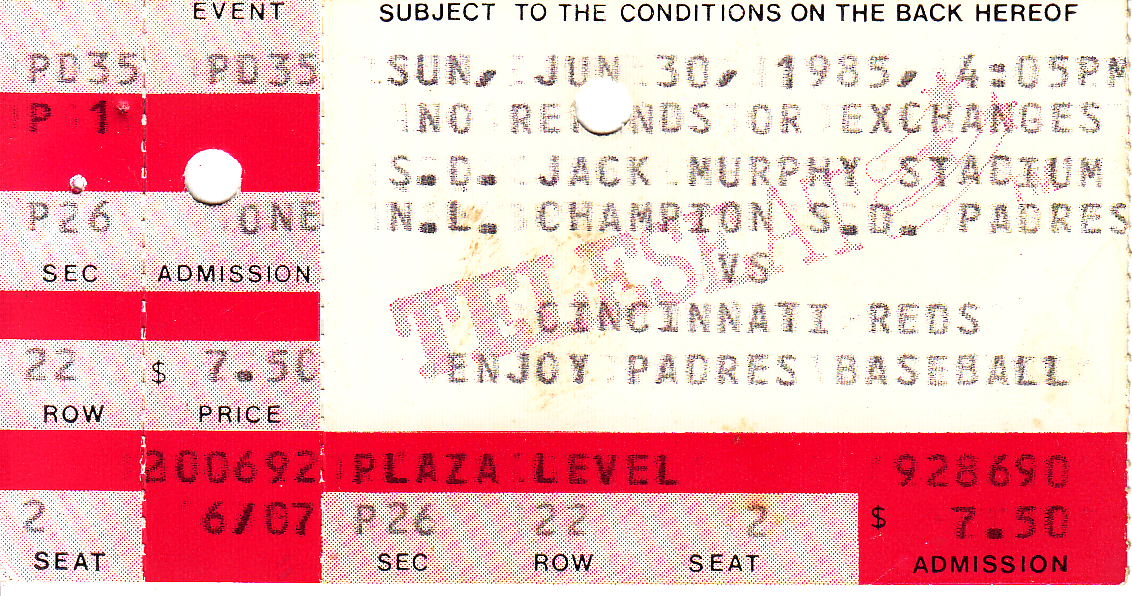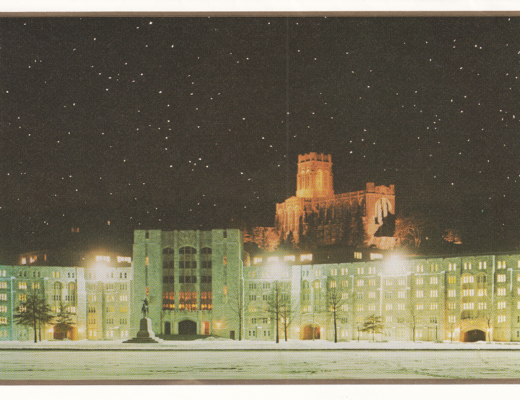The action on the field paled in comparison to the drama we witnessed beyond the right field bleachers.
Duty Station: Southern California
While I didn’t appreciate it at first, as a young sailor I was fortunate to draw Naval Air Station North Island as my first duty assignment. Though more often than not we were deployed aboard ship, the time we spent at North Island and the adjacent seaside town of Coronado still bring pleasant memories of tennis matches, strolls along the beach, and the historic and iconic Hotel Del. Though NAS North Island is located just across San Diego Bay from the massive Naval Station there, it was worlds away in amenities and environment. I met another Navy veteran recently who said he too was stationed in San Diego. “Wasn’t it wonderful?” I asked him. He gave me a strange look and said, “Not really.” Apparently, things were more gritty for the less fortunate sailors on the other side of the bay. Still, the mention of Southern California might produce in many minds images of palm trees, beaches, and citrus fruits, but as recent headlines make clear, California has its challenges – among them water shortages, a generally dry climate, and Santa Ana winds that too often combine to make the coastal areas susceptible to wildfires.
San Diego’s Mission Valley
 In 1769, Spanish Franciscan priest and missionary Junípero Serra founded Mission San Diego de Alcalá, the first in a series of Spanish Missions that he helped establish along the Pacific Coast in then Alta California. The original mission was located at the mouth of the San Diego River in what is now known as Old Town in Mission Valley West, near present-day Mission Bay. In 1774, the mission was moved six miles upriver to its present location in Mission Valley East. Following an Indian revolt, a fire, and an earthquake, the current adobe church was dedicated in 1813, and its bell tower has become a visual icon of the city of San Diego. After the remnants of the crumbling mission church were rescued and rebuilt in 1931, nearby quarries and pastures were slowly pushed out and development of its namesake Mission Valley followed. Neighborhoods grew on the ridges above the valley, while hotels, shopping centers, and modern highways filled the gully and its associated finger canyons.
In 1769, Spanish Franciscan priest and missionary Junípero Serra founded Mission San Diego de Alcalá, the first in a series of Spanish Missions that he helped establish along the Pacific Coast in then Alta California. The original mission was located at the mouth of the San Diego River in what is now known as Old Town in Mission Valley West, near present-day Mission Bay. In 1774, the mission was moved six miles upriver to its present location in Mission Valley East. Following an Indian revolt, a fire, and an earthquake, the current adobe church was dedicated in 1813, and its bell tower has become a visual icon of the city of San Diego. After the remnants of the crumbling mission church were rescued and rebuilt in 1931, nearby quarries and pastures were slowly pushed out and development of its namesake Mission Valley followed. Neighborhoods grew on the ridges above the valley, while hotels, shopping centers, and modern highways filled the gully and its associated finger canyons.
Jack Murphy Stadium and the San Diego Padres
In 1967, San Diego Stadium opened on Friars Road in Mission Valley East, within walking distance of the rebuilt mission church. The multi-purpose structure was later named for sportswriter Jack Murphy until 1997 when the naming rights were leased to a communications company then, very recently, to a regional credit union. The stadium was the home of Major League Baseball’s San Diego Padres for 35 years. In a nod to the city and neighborhood in which they were to play, the team was named in honor of Padre Junípero and the other Spanish friars that established the San Diego Mission.
My friend Tom and I arrived in San Diego in May of 1985. Since we did not have access to a car, playing sports and walking to and around Coronado were the limit of our adventures during our free time that first month. We were both big baseball fans, so we plotted a trip to “The Murph,” as the stadium was sometimes called. We took public transportation out there on at least one occasion, a near-two hour ordeal each way as bus service to and from Coronado was spotty and unreliable. It is more likely that for our first grand adventure off the island we took advantage of a group trip organized by the Naval Air Station Recreation and Welfare Office.
The Wildfire Game – June 30, 1985
The Padres won the National League Pennant in 1984 and their lineup included Steve Garvey, Garry Templeton, and future Hall-of-Famers Tony Gwynn and Goose Gossage. The first of the many games we were to attend at Jack Murphy featured a great pitching match up: Padres ace Andy Hawkins (11-1) facing Cincinnati Reds rookie phenom Tom Browning, on his way to an historic 20-win season, a rookie mark not repeated since. The Reds starting line-up that day included baseball legends Pete Rose, Dave Parker, and Dave Concepción. It was a pitcher’s duel as advertised, but the action on the field paled in comparison to the drama we would witness beyond the right field bleachers.
At 96 degrees, it was the hottest day of the year, and at the time the hottest June 30th on record.
It had been a dry and extremely hot June in San Diego (annual median temperature 71° F, don’t hate). According to city records, the temperature on that Sunday afternoon reached 96°, “the hottest day of the year, and at the time the hottest June 30th on record.” Be that as it may, as far as we were concerned, it was a beautiful day for a ball game. Memory is a tricky thing, but we would have tried to encourage early arrival for batting practice and warm-ups, and to explore the new (to us) stadium. Though the external drama reportedly started at about 12:00 noon, to my memory all seemed typical even up to the first pitch at 4:05 p.m. It was shortly after that that we noticed the puzzling actions of fans in the upper deck. A mass of people were gathering there – gesturing and pointing south to the hills beyond the right field bleachers and across Interstate 8. One of the hillsides was on fire, and though the game continued, the entertainment within the stadium gave way to the incredible sights taking place just across the highway.

Jack Murphy Stadium ca. 1985. Normal Heights lies atop the hills just beyond the right field bleachers. (photo from www.ballparksofbaseball.com)
The Normal Heights Fire

The smell and the smoke wafted through the neighborhood, and the progress of the fire was clearly visible from many vantage points in the stadium. The wildfire crept slowly up the hillside, suddenly appearing on an opposite hillside. Fire equipment massed at the base of the hills along Camino del Rio South, and personnel climbed into the brushy undergrowth to try to stem the fire’s progress, facing unpredictable winds and trench-jumping flames. At the promontories of the hillsides a few houses overlooked the valley, vanguards for the Normal Heights neighborhood that stretched out behind them to the south and east. As the tragic scene played out in slow motion, we watched the flames and smoke creep ever closer to those lonely homes. When it finally reached the first within our view, the house went up with an audible “poof” and was totally engulfed in a matter of seconds. No sooner had the house been destroyed than our eyes were drawn to the next house in the line of fire, feeling dread but powerless to do anything but watch. Helicopters had flitted here and there throughout the event, some actively involved in trying to fight the fire (with limited results), when a large aircraft approached from the west. A cheer went up from the stadium as the tanker opened its bomb bay doors at a low level above the fire on the ridge. The purple-colored fire-retardant that it released was carried by the wind, missing its intended target. We witnessed at least four runs by these aircraft, and as the afternoon wore on, the drama slowly faded to the neighborhoods behind the ridges and out of our line of sight.
The fire was completely contained that Sunday night, by which time we were already back at NAS North Island, awed and grateful for our many blessings. We must have called home that evening to talk to our families, likely neglecting to mention that Tom Browning gave up only two hits in seven innings pitched, and the Reds beat the hometown Padres 3-2.
From a San Diego Fire department report:
“A fire fueled by heavy brush and strong winds raced up a series of Mission Valley canyons on June 30, 1985. The Normal Heights Fire burned 300 acres, destroyed 76 houses and damaged 57 others. Damage was set at $9 million. 1,000 to 1,500 people were evacuated. It was, at the time, the worst brush fire in San Diego history.
Heavy brush in the canyons and around the houses on the canyon rim propelled the fire. A force of some 400 firefighters and 98 rigs fought the fire. Firefighters from virtually every city and rural fire district in the county rushed to San Diego to help, including teams of federal firefighters from North Island and Miramar Naval Air Stations. The San Diego Fire Department called in 40 off-duty firefighters. Reinforcements came from Ventura, Imperial, Riverside and Orange Counties. By evening, two air tankers arrived from Ventura County.
The first call came in at 11:52 a.m., but the fire was already out of control when the first units arrived. By 1:00 p.m. it had gone to four alarms. By evening, the fire zone was more than a mile long and a half mile wide.
Firefighters eventually overcame the flames despite problems with low water pressure from water hydrants. The Normal Heights fire pushed the City of San Diego to establish several initiatives including a weed and brush abatement program, an educational campaign for canyon rim residents and a plan to improve water pressure in the mid-city area.”





No Comments